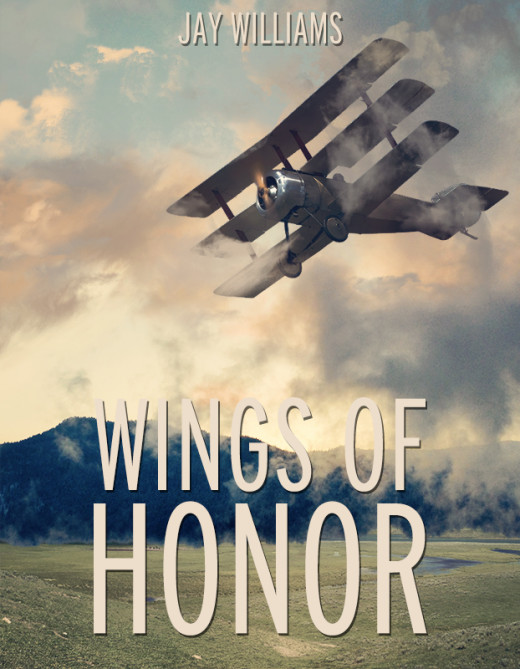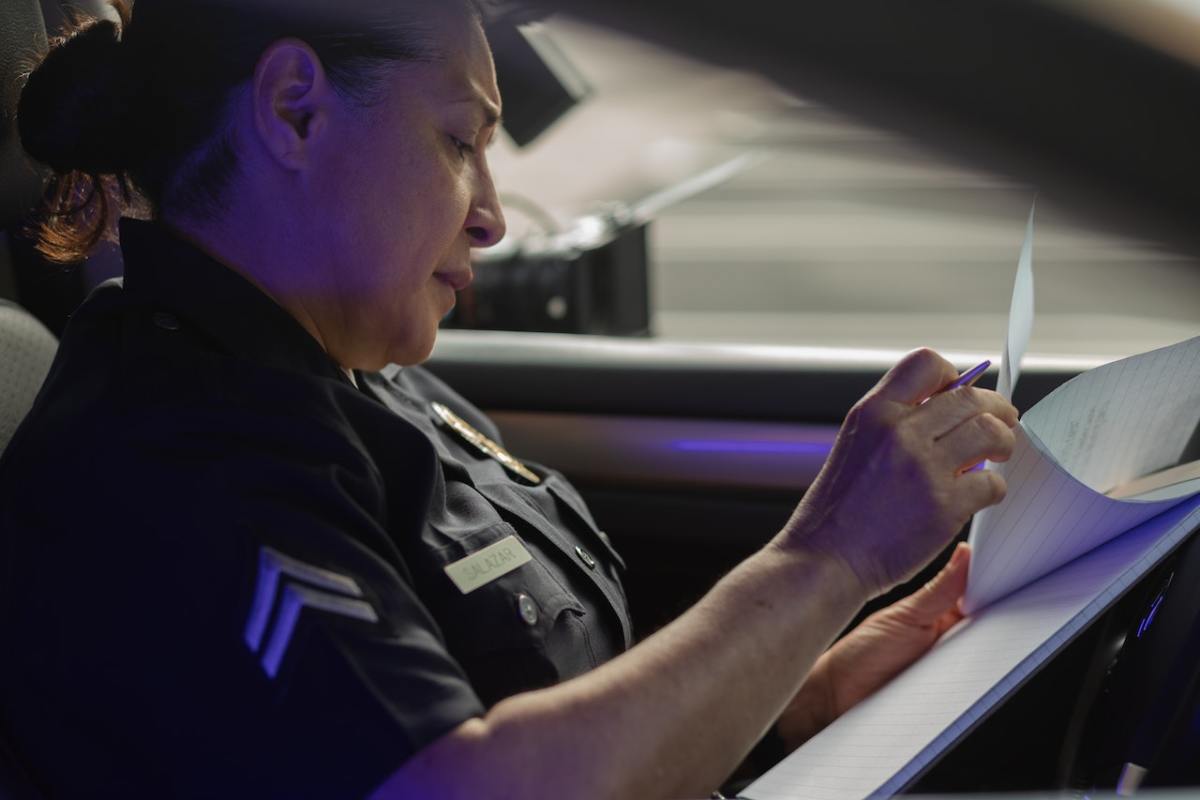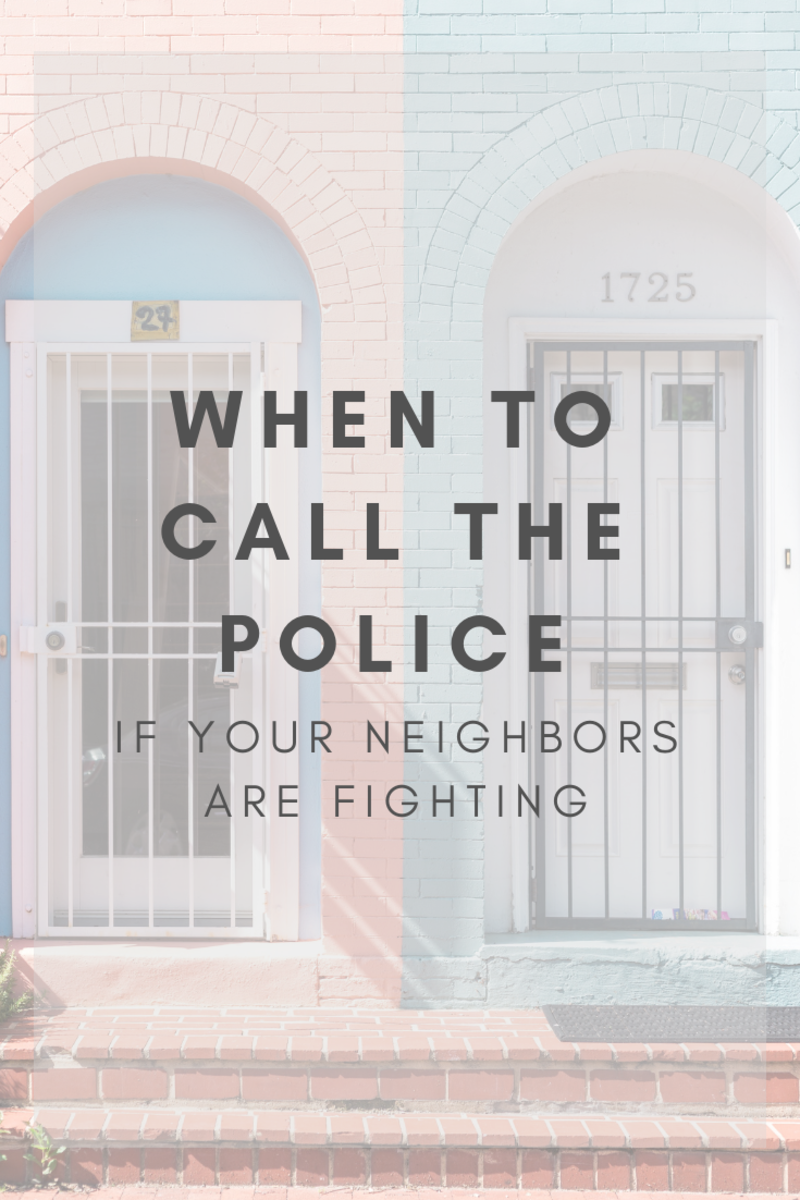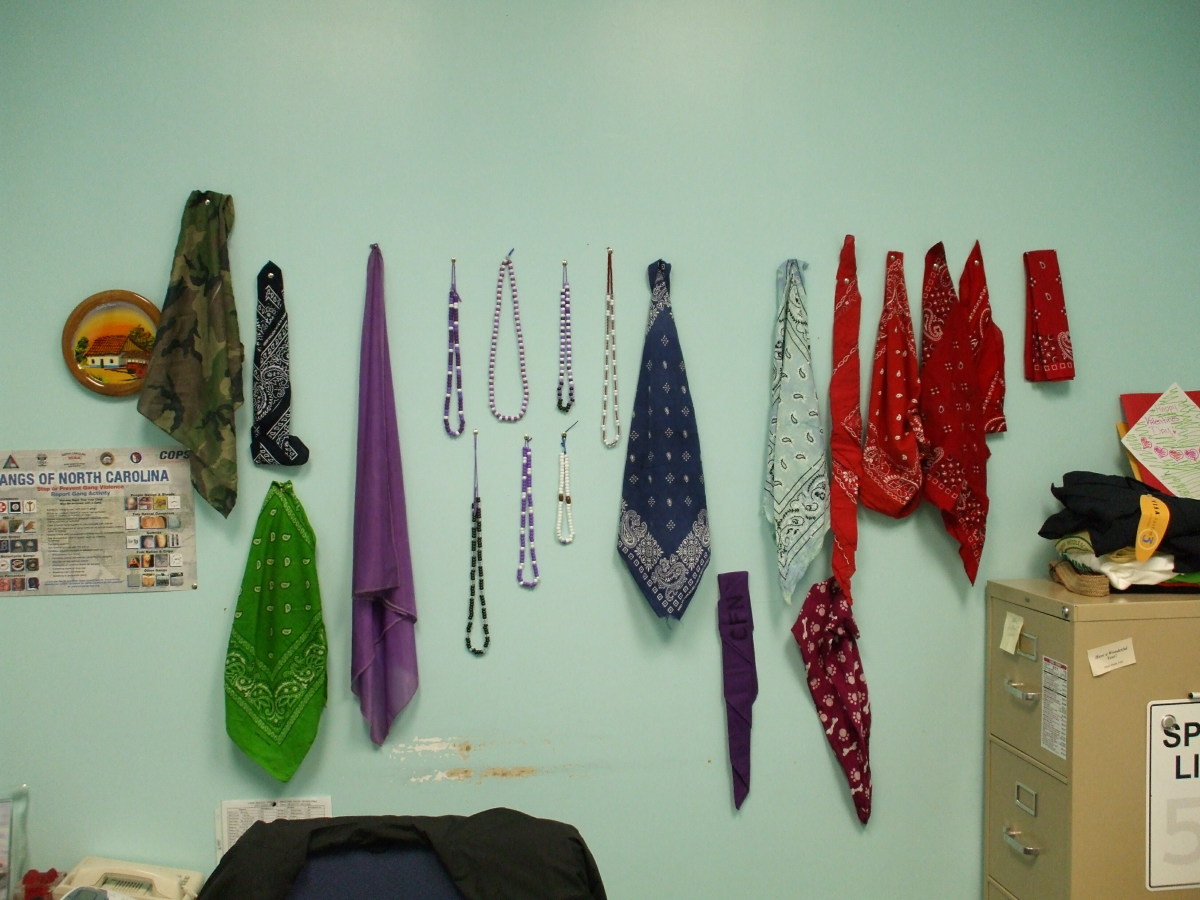Dead Men Tell No Tales
Why I wrote this
Years ago I began work on a book about police brutality. I was inspired by the Rodney King incident in LA in which cops pretty much got away with beating the shaving cream out of a helpless man. Even though it was on video of them doing it! This happened because most people, well, okay, white people, believe that police can do no harm. If one does, it's an isolated incident. But that is not the case. In fact, there are thousands of cases of just the opposite in which the police overreact and use violence against civilians.
So I began this book and did indeed find thousands of cases of police violence. I planned to have sections on killings, assaults and an "other" section (corruption, vice, etc.). As I worked on the book, I also began sending it to publishers to try to interest them. I could not find one. It could be that at that time they just didn't have an interest, didn't think it would sell, or believed police weren't really as bad as I told them.
So since I couldn't get the book published, I instead just wrote an article about people they killed. I found a sympathetic person to host the article on his web page and there it sat for a number of years. He finally took it down though because it was pretty old (90s) and he thought it didn't hold up to time.
Well, I think it does. Plus, this is still going on. In fact, it might be worse. Today police are arming like military forces and using that armament in more and more cases. So I'm bringing the story back and perhaps as time goes by I'll get enough interest to restart my research and try again.
I don't think all police are bad, but likewise I also don't think they can do no wrong. I believe they are human. Just like the rest of us they can get upset and overreact, can have a bad day, get irritated at some comment or can make mistakes. Also, the job they do is difficult. I don't think it's easy controlling us humans. We've given them a lot of power to do that job. We allow them to have weapons and to use those weapons to protect us. However, we do not give them the power in order to brutalize us.
Fill free to add comments of course, but you can also recount any police encounters you had that you think the public should hear.
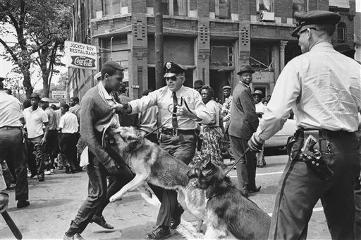
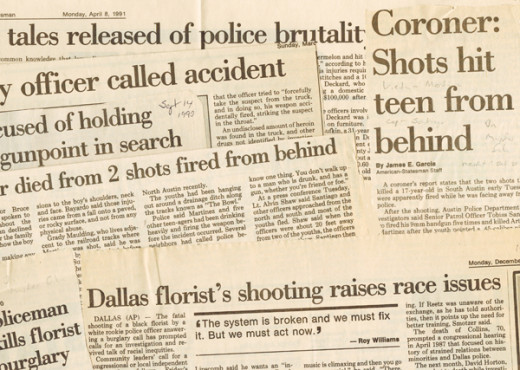
The Cases
UNARMED MAN SHOT BY POLICE.
Houston police officer K.N. Patton shot and killed James Cameron Higgins with a single gunshot to the throat in March, 1990. Higgins was unarmed and was driving a pickup that had one female passenger. Patton's account states that he saw Higgins' truck pulling away from a McDonald's restaurant where there had been a holdup and reports of gunfire. Patton chased the truck, lights and siren on, but Higgins did not stop until he had pulled into a parking lot and hit a utility pole. With his gun drawn, Patton approached the truck and ordered Higgins out. Higgins refused and Patton tried to force him out and in the process the gun went off, the bullet striking Higgins. Drugs were found in the truck, and the woman passenger was suffering from a drug overdose, according to a statement by investigators. However, one eyewitness (not the passenger) claims she saw the driver get out of the truck on his own and then two police officers approached with guns drawn.Shortly thereafter a single shot was heard. The suspect in the robbery that brought Patton to the scene had fled on foot and was not apprehended, and police suspect he took part in a convenience store robbery that occurred a short time later.
Points to Ponder: Higgins was stopped, not because he was suspected of having drugs, but because he was suspected of robbery. The reason he was suspected of robbery: he drove by the restaurant. Also, did Patton bother to ask why Higgins wouldn't get out of the truck? Was it because Higgins was worried about the woman? If a police officer really believes a man has a weapon, why get so close to the person if he is not covered by his partner? If covered by his partner, wouldn’t it be safer for all concerned to use two hands to pull the man out, thereby making it easier to grab any weapon the suspect might have? Source: Austin American-Statesman
BLACK FLORIST SHOT BY WHITE POLICEMAN.
In Dallas on Dec. 4, 1990, a black florist who had rushed to his business after he received a report about a robbery (the third in slightly over a month), was shot and killed by Dallas police officer Vincent Reetz. Reetz, just four months out of the police academy, shot R.L. Rose once after ordering the florist to drop the gun he was carrying. Rose had arrived on the scene before the police and was hunting for the burglar while carrying his own gun. He identified himself to Reetz' partner as the store's owner, but the rookie may not have heard him. Reetz ordered Rose to drop his weapon, and when Rose turned to face the young officer, thereby bringing his weapon around toward the man, Reetz opened fire, striking the 53-year-old in the chest. Reetz is the third Dallas police officer to kill a black person, who had been armed in self-defense, within a three-year period.
Points to ponder: The usual question to ask in this situation, which seems to be pretty prevalent across the U.S., is: if Rose had been white, would the officer have fired? Another point to ponder is that if Rose got to the site first, it means there was quite a time lag between the call and the police arriving. Why wouldn't the police think the owner would be there (and armed) and why would they believe the robber would still be near the store? In the same vein, sure, having a gun pointed at you might get you excited, but wouldn't a burglar act differently than a shop owner (i.e. be crouched down hiding, act frightened by approaching police, etc.) and shouldn't a trained officer be able to tell the difference? Source: Austin American Statesman
OFFICERS SHOOT 81-YEAR-OLD.
Andres Acosta, an 81-year-old man who was hard of hearing, was killed after being shot 10 times by two police officers who broke into his Luling, Texas house late at night on a drug raid. The officers, Deputy Al Alvarez of Hays County, and Deputy Mike Thompson of Blanco County, had a warrant for the raid, but the address on the warrant was for a different house. Police claim the house was correct, but the warrant had a clerical error. The shooting took place on October 24, 1990, late at night when the officers broke into the Acosta home searching for drugs and to arrest Ruben Acosta, Sr., the son of the slain man. Andres Acosta did have a gun and apparently fired at the officers, who were using flashlights to see. Acosta had purchased the gun because he had been robbed at gunpoint at his house two years earlier. Relatives claimed that the man was partially deaf, sick and on medication. Ruben Acosta, Sr., who may have been the target of the raid, was arrested on two counts of aggravated assault from earlier incidents.
Points to ponder: This simply looks like a case where an older man thought he was being robbed again, fired in self-defense and was killed by police who had broken into his house. Normally, this could just be chalked up to bad luck or misfortune, but it really points to bad research on the part of the police. It should be expected that a sudden, violent raid at night would be planned better, say, finding out the possible inhabitants of the house, possible results of a raid, past incidents at the house. In a case where there might be innocent civilians present, different tactics beside macho strong-arm assaults are called for. As for the man being shot, yes, he did fire at the officers, perhaps in self-defense, but the point that stands out is that he was hit 10 times by bullets (maybe more were fired). This indicates somebody may have been edgy or trigger-happy, in other words, perhaps the officers had a predisposition to use their weapons, no matter what the incident that might evolve. Perhaps any movement may have been enough to cause them to believe they were being threatened. Source: Austin American Statesman
TEENAGER SHOT IN BACK BY POLICE.
In Austin, Texas, a 17-year-old boy was shot and killed by a police officer who had arrived in the area with other police to investigate reports of gunfire. Arthur Martinez was killed by two bullets, one to the head, one to the chest, fired by Senior Patrol Officer Tobias Santiago. The incident occurred on Oct. 30, 1990, when police went to investigate a group of about five youths who were thought to be drinking alcohol and firing a pistol in a drainage ditch near some train tracks. Supposedly, police approached the group and several of the boys ran away. When the police were within 20 feet of the remaining boys, they moved quickly to stop their escape. Santiago noticed then that Martinez had a revolver and was pointing it at him, and so fired his own weapon. Santiago claimed to have been shouting to the youths that he was a police officer during the course of the incident. The coroner's report stated that the bullets entered the body from behind and from around 3 feet or more away.
Points to ponder: The most obvious point is, of course, the difference between the officer saying the boy was facing him, and the coroner's report that the youth was shot from behind. To most observers, this would seem to indicate the boy was running away, albeit possibly with a gun in his hands. Also, somehow the police were able to get very close to these boys, yet none felt threatened until one officer was within extremely close range. If one of the boys did have a gun (in the report it wasn't in the slain youth's possession) wouldn’t he have fired or pointed the weapon earlier, and not waited until an officer was within reach? Another strange point is: why did the police approach in this manner if they knew the boys had been drinking and shooting a weapon? Was a confrontation desired? Source: Austin American Statesman
MAN SUFFOCATED IN POLICE HOLDING CELL.
Dane Kemp, 28, arrested on assault charges for allegedly pistol-whipping his ex-girlfriend, was suffocated by five police officers from Brooklyn who were trying to subdue the man. A medical examiner stated that he was asphyxiated due to compression of his chest and neck while he was being restrained for violent, agitated behavior. The statement also said Kemp had crack and alcohol in his blood but not enough to cause death. Kemp was arrested early in the morning of Jan. 1, 1990, and the police handcuffed one of his arms to a bar of the holding cell. He suddenly became enraged when his former girlfriend walked by, and began yelling that he was going to kill her and also began banging a chair with his free hand. Five policemen entered the cell, strapped his legs with a Velcro strap, released his handcuffs, then bound his hands behind his back with another Velcro strip. The police did not report sitting or kneeling on his neck or chest in their report. The officers then carried Kemp out of the cell and strapped him to a gurney that was brought from an ambulance parked at the building. Two minutes later, the ambulance crew reported his heart had stopped beating. Police maintain he stopped breathing outside the precinct, his girlfriend stated that when he was wheeled past her on the way to the ambulance, he appeared dead. The officers involved were: Sgt. Thomas Urban, Officer Robert Schievenbeck, Timothy Wolf, Joseph Zogbi, and Anthony Kianka.
Points to ponder: With overwhelming odds such as this, it seems strange that it would require sitting on the victim's neck and chest to subdue him, even though he was very agitated. If they had released his hand before attaching the strip around his legs, it might be understood that more force was needed to subdue the man. However, they strapped his legs before releasing his other hand, which meant that if standing he would be off balance, and if on the floor, unlikely capable of putting up much of a fight with five men. Source: New York Times
UNARMED 17-YEAR-OLD KILLED BY POLICEWOMAN.
A 17-year-old, unarmed man was shot and killed in Bedford-Stuyvesant in New York, by a policewoman who was holding him at gunpoint. On January 27, 1990, Louis Liranso had been involved in an argument with a neighbor when police were called to break up the fight that witnesses claimed involved shouting and wrestling. Liranso had chased another 25-year-old man into a building where he was apprehended by two other police officers, who in turn took him outside and handed him over to Officer Hyda Hernandez. Two stories develop from here. Police state that she guarded him as he stood beside the wall of a Chinese restaurant, when he suddenly dropped his hands and turned toward Hernandez, who shot him once in the back (?). Witnesses say Hernandez was taking him into the Chinese restaurant when he tripped and then the officer shot him. Witnesses also say that the teenager had been drinking. In later testimony at the grand jury hearing, Hernandez claimed that the boy had grabbed her arm and tried to take the gun away from her. She made no statement prior to her Feb. 13 hearing.
Points to ponder: Shot in the back while struggling for the weapon? Was he reaching behind himself for the gun? Why delay making a statement, and more importantly, why did Hernandez make a different statement at the hearing than what was originally in the police report? Source: New York Times
UNARMED 14-YEAR-OLD KILLED BY POLICE.
An unarmed 14-year-old boy, allegedly fleeing from a $10 robbery, was shot and killed January 31, 1990 by a Brooklyn police officer, in the Bushwick section. According to police, Jose Luis Lebron was running toward Officer Frank Albergo when the boy reached into his jacket and pulled on a zipper. The officer thought he was reaching for a gun and shot him in the head. The police stated that the incident began when a man who was robbed of $10 flagged down police. Together the men cruised the neighborhood looking for the two youths who had committed the offense. The men spotted the two teenagers (the other boy was 19) and Albergo jumped out of the car and grabbed the older of the two. His partner chased the other suspect, who stopped, turned and ran back toward Albergo, who was still holding the first suspect. Albergo ordered the young boy to stop, and when he didn't, Albergo shot him. Witnesses claimed the boy did reach into his jacket, but pulled his hand out slowly, not suddenly, and not threateningly. They also claim he was shot twice. The lawyer who represented the family in the case claimed that the boy was running away from the officer when he was shot, not toward him. The coroner's report showed the bullet entered the back of the head behind the right ear, traveled diagonally, then lodged on the outside of the left eye socket. Another oddity, was that police claim the boy was shot from six to eight feet away, while the police photo showed that it was more like 25 feet. Police did not have an answer about how the boy was shot in the back of the head while running toward the officer.
Points to ponder: Of course, the conflicting evidence is the major point to consider, but a side note is that nowhere in any of the articles about the case was it mentioned that the two teenagers used a weapon, especially a gun, while committing the alleged robbery. Therefore, why was a gun needed by the police to stop the teen? And more importantly, if the shooting took place from eight feet away, even though it was 5:30 in the evening, why couldn't the police officer tell if the youth had a gun in his hand? (Cynical aside: Are NY police required to take an eye exam?) Source: New York Times
ARMED 13-YEAR-OLD KILLED BY POLICE.
A New York policeman shot a 13-year-old boy, who was carrying a gun and chasing another teenager who also had a gun, on February 2, 1990. Both boys were suspected of holding up a truck driver. The story: Robert Cole and two other teenagers tried to hold up a truck driver, who resisted and even took away the gun Cole was holding. The boys ran away, but the truck driver saw Cole returning shortly thereafter and he was now carrying another gun. The driver flagged down a nearby EMS ambulance to seek assistance. The EMS and truck driver drove a short distance and stopped a police car with two officers. Both police officers got out of their car and confronted Cole. Officer Larry Walton ordered Cole to stop and drop the weapon. Cole refused and pointed the weapon at the police officer. Walton quickly shot Cole in the chest and the youth died shortly thereafter.
Points to ponder: This was slipped in to show that admittedly, it isn't easy to be a cop. Some situations are not only dangerous, but also very confusing--and in the end, tragic. Sometimes, violence has to be used, as it seems in the case above. But the important thing for people, especially police, to remember, is that this shouldn't be considered the norm. Neither police violence, nor children with guns should be considered acceptable or normal. Source: New York Times
POLICE KILL MAN THREATENING SUICIDE.
Brooklyn police shot and killed a 20-year-old man who was holding two knives, threatening to kill himself. On March 1, 1990, David Cotto was shot nine times by police who say they fired when Cotto charged at them after he was maced by one of the officers. Another family member called police to Cotto’s family apartment after Cotto became involved in an argument with an upstairs neighbor. When the police arrived, they found Cotto holding two kitchen knives. At this time, he held one to his throat and threatened to kill himself. The police somehow calmed him down and convinced him to drop the knives. Cotto did this, but then rushed to the kitchen and grabbed two more knives. The officers ordered him to drop these also, and when he didn't Sgt. Vincent Guzzo sprayed mace into his eyes. The police report of the incident states that Cotto then lunged at the officers and Officers Joseph Galli and Patrick Balsamo fired their weapons. A total of 11 shots were fired. However, Cotto's sister and father, who were in the apartment, claimed that the man never lunged at the police, but instead dropped the knives and brought his hands up to rub his eyes. It was at that time that the police opened fire. They also stated that at one point Cotto yelled he'd kill himself before he'd let a cop kill him.
Points to ponder: Admittedly, the man was acting irrational, but the actions of the police sound equally odd. There was a minimum of three officers present, the man had mace in his eyes, and yet, the only way to stop him was to shoot him? For the most part, the mace incapacitated the man. Couldn't a nightstick be used? How about getting a family member to talk to him? Of course, the big question has to be: Eleven shots? Did the police believe the man had his knife set on semi-automatic? Source: New York Times
OFF-DUTY OFFICER KILLS 62-YEAR-OLD.
In Brooklyn, a 62-year-old man leaned on his horn a little too hard and ended up dead by the hands of an off-duty police officer. "It's so ironic," a neighbor would say later, "For a person who was always working very, very hard to stay within the law to get shot--and by the law." On January 23, 1989, Stephen Kelley stopped his pickup behind a car that was parked and blocking the service drive to Kelley's apartment complex. Radames Ortiz, the off-duty policeman, was a passenger in the car driven by his sister, who also happened to be an off-duty officer. Neither was in uniform. Kelley honked his horn at the parked car and Ortiz jumped out of the car and walked to Kelley's truck. Ortiz did identify himself as a policeman, but an argument developed anyway. Ortiz sister got out of the car and joined the argument. Shortly after this, Ortiz pulled a pistol and a struggle developed for the weapon. Kelley, who was unarmed, was shot twice in the stomach. No other weapon besides Ortiz' was found at the scene, and the officer refused to give a statement about what happened to officers who arrived to investigate.
Points to ponder: A case of power corrupting? The officer was off-duty, out of uniform and apparently parked illegally. Did he perhaps believe that as a police officer it was okay to do this and that no one had a right to question what he did? If this was not the case, why did he feel it was necessary to identify himself as a policeman? After he identified himself as an officer, did he become even more incensed that a mere civilian would still argue with him for blocking the drive? So incensed, that he pulled his weapon? Or did he really feel physically threatened by a 62-year-old man who just wanted to get to his apartment's parking lot? Source: New York Times
22-YEAR OLD DIES AFTER STRUGGLE WITH POLICE.
Officers Kevin Muholland and Mark Meehan of the Morristown, N.J. police department were patrolling near a local tavern on January 29, 1989, when they noticed John Jackson, 22, passing by. They remembered that Jackson had a warrant out for his arrest, so the men chased him toward his apartment. A third officer walking around a corner of the building ran into Jackson, knocking him down. According to police, they then handcuffed Jackson, who continued to struggle with them, but as they were putting him in a police car he went limp. A sergeant on the scene told the officer to take Jackson to the hospital, as he had reported earlier that he was an asthmatic. While in transit, police stated that they discovered he was unconscious. Jackson was pronounced dead at the hospital. Witnesses to the incident claim the police had Jackson in a chokehold and repeatedly banged the man's head on the patrol car. They also stated that he was unconscious before being placed in the patrol car. The medical examiner stated that Jackson died of cardiac arrhythmia, brought on by cocaine use. Cocaine, morphine and traces of other drugs were found in his blood. He also reported that he couldn't find any evidence of brutality, but also reported the dead man had a cut above the right eye and bruises on the scalp. Police claimed those wounds were the result of the fall Jackson took when he ran into the other police officer.
Points to ponder: Although most of the details in the reports were sketchy, it seems that there were a minimum of four police in contact with Jackson when he was arrested. There was no mention of him being armed, and it was a case of white officers in a black neighborhood. If he did die of cardiac problems, is it possible the force the officers used compounded them? Was he struggling because he couldn't breathe? Again, here is another case where the police have far superior numbers, but are still using over-zealous force to subdue a possible suspect. One versus one, or maybe two vs. one and it's possible that strong force may be needed. But four versus one? Source: New York Times
MAN DIES 90 MINUTES AFTER ARREST.
Richard Luke, 25 and an asthmatic, ran into his apartment in Queens, N.Y. on May 21, 1989, and in a frantic state claimed he was having problems breathing. Perhaps in fear, he ran out of the apartment, and his sister called for an ambulance. As a matter of routine, the EMS called the housing police to assist. Just as routine, two stories developed. Officers Alfred Cavanaugh and Michael Segarra claim that Luke assaulted them in a completely unprovoked attack. They chased him back into the apartment building, handcuffed him and took him to a holding cell in a housing police station. While Luke was in that cell, he became enraged and began beating his head on the cell floor. Police subdued him again and took him to a hospital, where he died. They claim that two vials of crack fell out of his pocket while he was in their custody. Witnesses to the incident, including his mother, claim a slightly different story. His mother stated that she saw him being chased back into the apartment building by police. When she ran down to the lobby, she found police were struggling with Luke on the floor. Other witnesses claim that one of the officers involved in the lobby struggle had a nightstick to Luke's throat, choking him. Six other officers came to assist during the struggle. Luke's mother screamed at the officers to stop, but they said that he was resisting arrest. However, she claimed he looked too sick to resist. The woman followed the police to the station, and while there could hear her son screaming. When she frantically asked police what was going on, they told her Luke had gone crazy and was beating his head on the floor. Later, the medical examiner claimed Luke died from "acute cocaine intoxication." The autopsy showed scrapes to Luke's skin and bruises to his head, trunk, lower and upper extremities. Asthma was not considered a factor in the death. Friends of Luke claim he didn't use cocaine.
Points to ponder: If we really wanted to act paranoid, we'd say it was suspicious and the police were planting evidence to calm down a racial incident. Yes, again it was white police in a black section of a town. But in this case, it looks like the typical habit of too much force compounding a bad situation. The man was acting frantic because he probably thought he was dying (without police help), because of his breathing problems. The police took his actions as threatening and reacted violently, even though the odds were, once again, extremely in their favor. Apparently, at one time even reaching eight to one! Using excessive force on a man having trouble breathing may not cause death, but it does add a contributing factor. Source: New York Times
OFFICER KILLS FOR THIRD TIME IN SIX MONTHS.
Arlington, Texas detective Brian Farrell can now add a third notch to his pistol after shooting a forgery suspect who was holding a round-tip dinner knife. It was the third person killed by the officer in a six-month span. Farrell was suspended from the force shortly after this last incident, largely because investigators found two notches carved in the grip of his gun--much like the ones gunslingers from the old west carved into their pistols to note the number of victims of their quick draw. This third incident occurred on February 1, 1989, when Farrell and his partner went to Dallas to arrest Michael Robinson on a felony warrant for forgery. When Robinson didn't answer the door, the officers kicked it in and entered the house. They found the man hiding behind a counter, and when the two plainclothes detectives confronted him, he held up a round-tipped dinner knife to fend off their advance. The two officers began to back out of the house, talking to the man as he followed them out. Several times they ordered him to drop the knife, but he refused, and according to the officers' report, he stated they'd have to kill him before he'd drop it. When the group finally stopped outside, a short shouting match ensued, with the police repeating that Robinson should drop the knife. According to the first report, the men were only about three feet apart during this shouting match. When Robinson again refused to drop the knife, Farrell shot him. The report said Robinson did not lunge at the officers with the knife, however, in a later account, the police said he did. Robinson died a short time later at an area hospital. A few other interesting points about this case include that it is against Arlington police procedure not to notify Dallas police that they are operating in their area. Also, the procedure for the Dallas police is for them to hold the suspect at bay and call a tactical unit to handle the situation. Another interesting note is that when Dallas police did arrive on the scene, Farrell demanded a lawyer before he would release a statement (to the police). Not only that, but Farrell had been assigned to forgery duty because of the earlier shootings, and the Arlington police were hoping to keep him away from incidents where there might be such confrontations. This was the first forgery suspect killed by Arlington police in 10 years. And for those who like to compare kill ratios: No Arlington police officer has been killed since 1975.
Points to ponder: There are just too many. But one thing to mention is, that this case is why the outcome is not mentioned in any of the others. Farrell was absolved of blame for this killing, just as he had been for the two others he had committed. He was only suspended for suspect behavior and for not following procedures. All of the incidents he was involved in sound suspicious, although this author won't say he is guilty of anything, this is a perfect example of the police word vs. civilian's word. The police are always believed and the evidence has to be overwhelming to get any sort of conviction. Robinson is dead, and although all he did was hold up a dull dinner knife toward two officers, we will never get to hear his testimony as to what happened. So it is the police word vs. the police report. How just. Source: Dallas Morning News
Your opinion on police violence
Do you believe police overreact or act too violently more than they should?
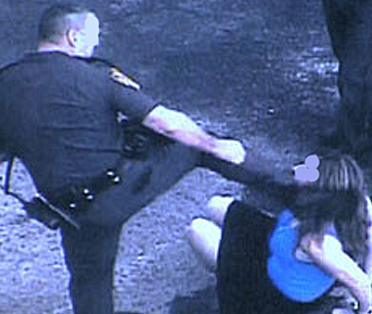
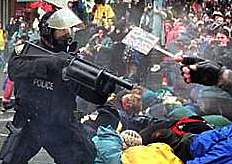
Police Brutality/Violence Web Sites
There are a lot more cases, but I don't want this thing to run on more than I have already. So instead I thought I'd include some web sites that are relevant to all of this.
- Web site about police violence: http://phoenixcopwatch.wordpress.com/
- List of police killings by year: http://en.wikipedia.org/wiki/List_of_killings_by_law_enforcement_officers_in_the_United_States
- Stop Police Brutality web site: http://www.policebrutality.info/
- FaceBook page for the above: https://www.facebook.com/policebrutality
- Police Crimes News: http://policecrimes.com/
- Video worse than Rodney King: http://www.theluzernecountyrailroad.com/police-brutality.php
- ACLU's action manual to fight police brutality: https://www.aclu.org/racial-justice_prisoners-rights_drug-law-reform_immigrants-rights/fighting-police-abuse-community-ac
- Even more news stories about police brutality: http://www.newser.com/tag/18506/1/police-brutality.html
- Database of cases of police brutality: https://secure.accountableauthority.com/
Comments?
Please feel free to leave your comments about this article or the topic of police violence. You may also relay your stories about encounters with police that you believe the public should hear (good or bad).
Books by the Author
